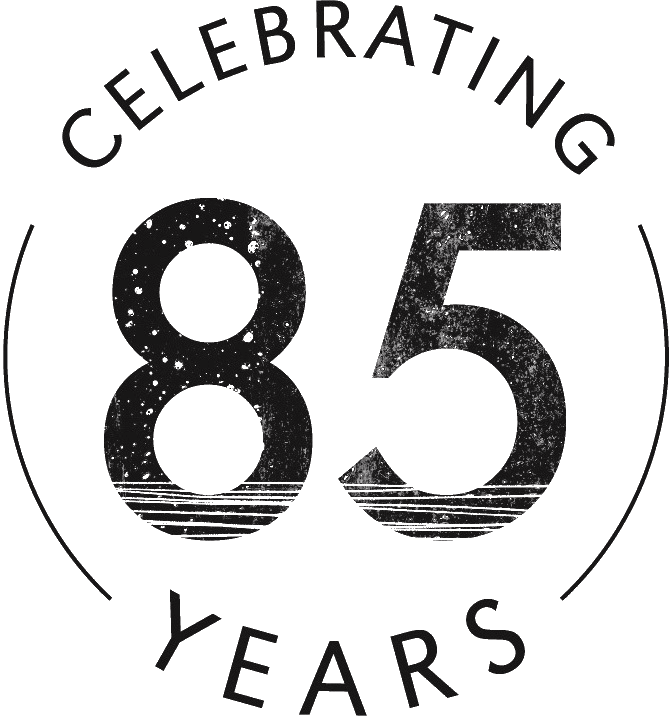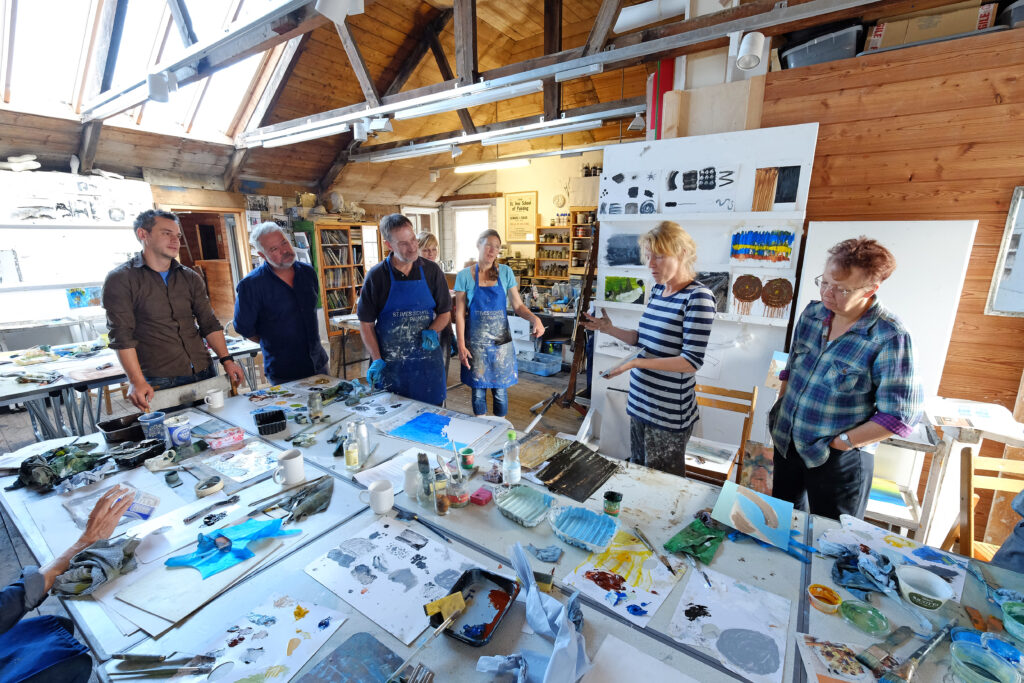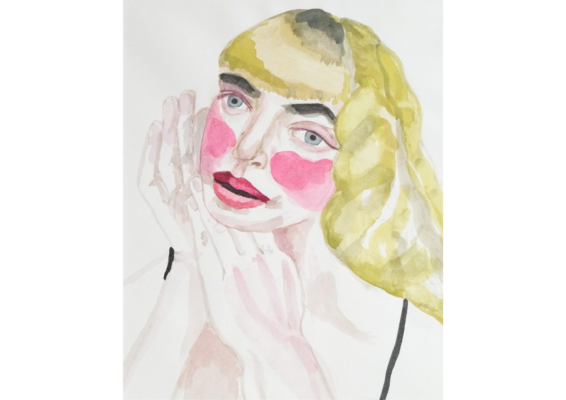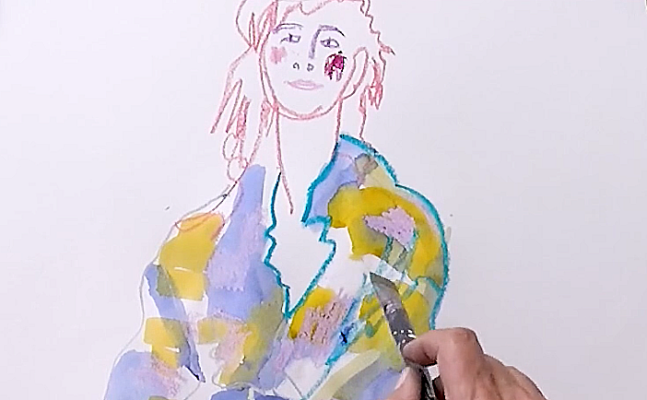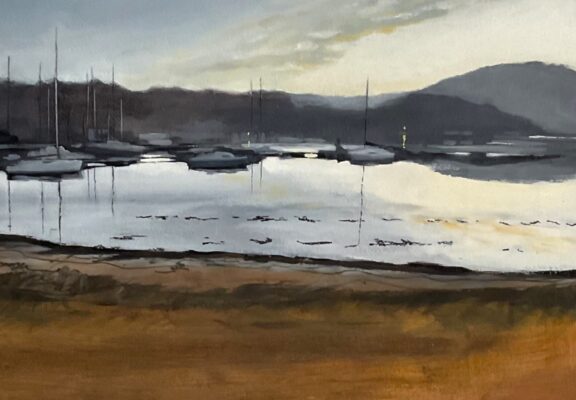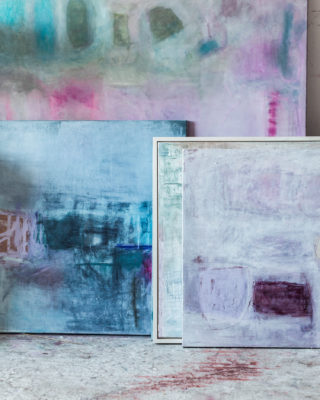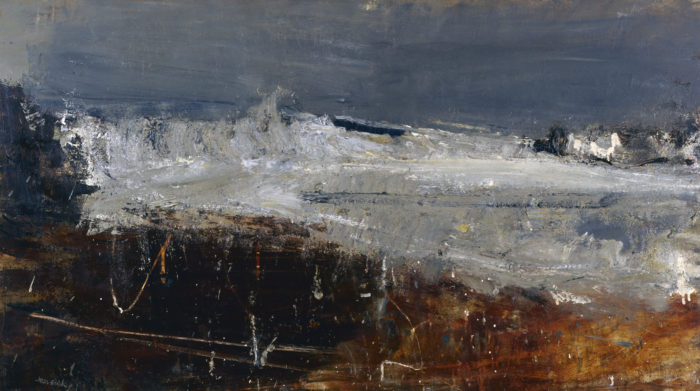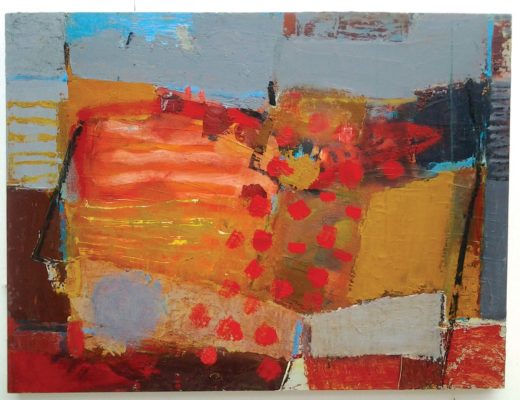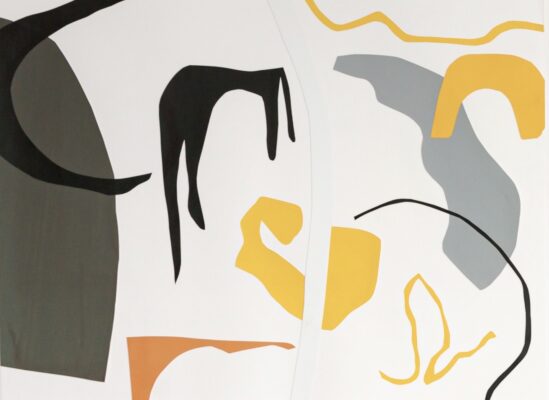Course details
A ten month intensive course to develop you as an artist, enabling you to find and express your individual creative voice. Led by a personal tutor and a host of guest artists.
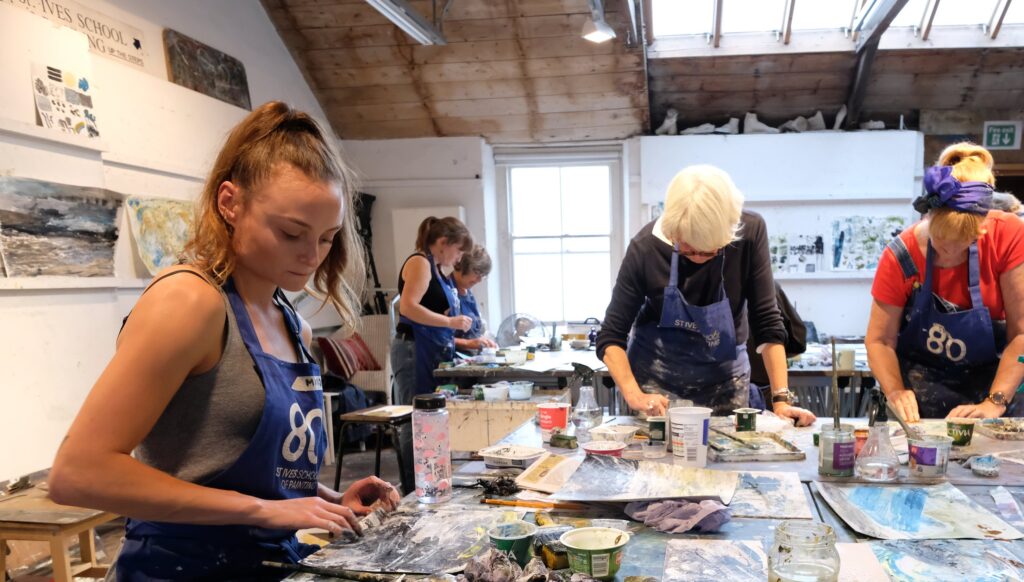
The Porthmeor Programme is a unique opportunity to find and develop your individual creative voice over the course of 10 months. Making is at the heart of it. We combine professional guidance and support from 1-1 tutorials with our lead artist, with practical making workshops led by guest artists.
We restrict the class to a small group size so there is a generous amount of tutor time alongside a close, supportive peer group.
Many students go on to exhibit together and establish valuable long term networks. We have now run the Porthmeor Programme for 10 years, guiding over 100 students through our unique programme so far.
This developmental art course will take you on a journey with the primary purpose of expanding your personal practice. Running through the programme is the development of your critical voice through personal projects, one to ones and group crits.
You will learn to develop key ‘creative muscles’: risk taking and experimentation alongside the art of translation and interpretation.
Monthly Workshop Plan 2025
The 3 day workshops run over weekends. Alongside the individual 1-1 tutorials with the lead tutor, they always have a practical making element as we believe we learn best through making and doing. Each session focusses on a key theme. Students have said how much they value having three full days in the studio, allowing time to create, reflect, discuss and critique without pressure. Below is an indication to the content of the workshop weekends. However sometimes the structure of the days may alter depending on the nature of the group and weather.
21st – 23rd March
Introduction with Kate Southworth on Friday
Saturday/Sunday Motivation Through Materials with Kitty Hillier Encouraging experimentation and play, working with acrylics, collage and mixed media, loosening your approach to making art.
25th – 27th April
Harnessing Chance In Painting – Kate Southworth
During the weekend you will work with automatic techniques of image making to allow your unconscious creativity to emerge unhindered, discovering new ways to tap into your creativity in a freer, less self-conscious way.
30th May – 1st June
Dreams & Drives – Ilker Cinarel
What is your individual artistic practice? And what is your working method? Over the weekend, Ilker will help you to define these for yourself, through group discussion and practical exercises that involve writing, expressive drawing and model making.
11th – 13th July
Finding Your Voice Through Nature – Greg Humphries
Using memories and sketches gathered from a Special Place, Greg will demonstrate charcoal drawing, acrylic painting and glazing and discuss the process of simplification to abstraction within nature.
5th – 7th September
New dimensions 2D to 3D and back again – Camilla Dixon
Develop Your Painting and Creative Potential Through 3D Abstraction and Exploration. Playful, experimental exercises will help you to loosen up and widen your creative curiosity, flexibility and confidence.
10th – 12th October
Finding The Essence – Rachael Kantaris
Distil your ideas into simple forms and explore a variety of print making techniques using full sized professional presses at the historic Porthmeor Print Workshop.
7th – 9th November
Revitalise – Jill Eisele
This weekend will be about gestural and risk taking mark making using materials such as oil paints and oil bars. Move forward in your artwork, with practical inspirational ideas that feed in to your practice, focusing on the random, the sensory, and individual responses to all things visual.
5th – 7th December
Closing Weekend with Kate Southworth
Spend three full days in our historic studios as the fully fledged artists you have become, you will each be focusing on your own work, and your one to one tutorials with Kate.
INSTALMENT PLAN
You can reserve your place with a £400 deposit and set up an instalment plan. Contact [email protected] to arrange
What skills will I learn?
The sessions are varied, and most people will come across a new technique or nugget of information they will find valuable. However, the primary focus is not on developing your painting skills in these sessions. It is about discovery, taking risks and gaining insights.
We design the sessions to limber up your creative practice, to energize and to build the critical voice you need as an artist. We are happy to advise you on our shorter courses online and face to face that offer a range of practical skills development. To help you supplement the Programme with practical learning we off a 15% discount on all our online sessions.
Who would this course suit?
This will suit both early stage artists and those with more experience who are looking to challenge and stimulate their practice. We believe that developing a strong practice is where you start. Rather than focusing on the secrets to gaining gallery representation, making a living as an artist, or simply improving your painting techniques, the emphasis should be on your growth as an artist.
Our diverse range of weekend workshops offers a unique opportunity to explore a wide variety of subjects, materials, and techniques. Each workshop is designed to enhance your skills and empower you to push your creative boundaries. This journey of self-discovery is a crucial and exhilarating step, and we are here to support you every step of the way.
Please get in touch if you would like one of our team to give you a call to discuss whether the programme is right for you and answer any questions you may have. You can arrange this by emailing us at [email protected]
What to Bring
Timings and Breaks
How much contact time is there with the tutors?
Every month there will be a 3 day workshop involving a guest artist and your lead tutor and you will have a personal 1 to 1 tutorial.
We also have a bespoke online platform for your group to discuss and share work on, offering peer support and encouragement.
What happens when the programme ends?
We have a number of offers for those who would like to touch base again and refresh. These include artist retreats ranging from five days to a weekend.
How is the programme structured?
Over 8 long weekends, you will enjoy a mix of individual tutorials and guidance from our lead tutor, accompanied by a structured and varied creative programme taught by our guest artists.
Each weekend runs over three days, 4-6 weeks apart, with a break over Summer.
The lead tutor gets to know and your work in depth and you will have the benefit of a variety of guest artists who give you a different perspective on your work.
Our guest artists are: Greg Humphries, Camilla Dixon, Kitty Hillier, Ilker Cinarel, Jill Eisele and Emily Roberts.
Taught by
We caught up with Gwynne, an alumnus of the Porthmeor Programme, whilst visiting ‘Ebb & Flow’, one of three successful exhibitions put on by MAC | RAGS – an art collective made up of 8 Porthmeor Programme alumni from the 2020-21 programme.
How would you describe your art practice?
My art practice is very much integrated within my life. I work with different materials at different times of the year, and in different places (generally acrylic or oil and cold wax in the studio, woodworking on the patio when the weather allows and raw canvas, paper and found objects when I’m away from home). My practice includes photography, digital artwork, painting, writing and assemblage sculpture.
I’m currently working on a body of work that relates to the intertidal zone of the shoreline, inspired by my time in St Ives. Sometimes my work is more realistic, sometimes more abstract and I am interested in exploring the external and internal landscape within the work.
What does your daily routine look like?
When I’m at home, I generally get into the studio in the morning and attend to anything that needs drying time first (preparing panels, applying isolation coats, finishing wax etc) or I might do a bit of journaling to set up the day and determine what I need to work on. I’ll stop for breakfast and coffee around 10 and then either work on paintings, sculpture or admin in the studio.
I usually take a short break over lunch and then back into the studio until around 7pm when I’ll stop to chat to my father on the phone. Sometimes I will be back in the studio in the evening, but I try not to work too late as it impacts my sleep.
When I’m out at exhibitions, I tend to be out early and back late, so that minimizes my studio time, but I’ll take a sketchbook or a small wire sculpture to work on whilst invigilating/stewarding. When I’m in St Ives, I like to go out walking early in the morning, and then return to the beach later in the day with an art or sculpture kit to work outdoors.
What do you enjoy doing outside of your art? How does that feed into your practice?
I love visiting galleries and exhibitions, swimming and walking. I find that I can take inspiration from pretty much anything – whether it is photographing seaweed shapes left by the outgoing tide, or the cracks in the pavement on walks closer to home. I particularly enjoy digital photography and collecting photographic reference material is part of my practice.
Who inspires you as an artist?
Peter Lanyon for his top-down perspective and making 3d constructions to help resolve/inform his paintings. David Mankin for the way in which he brings so much feeling of the landscape onto his canvas. Kitty Hillier for the way in which she experiments with different forms, collects and observes natural shapes.
Have you always been interested in art, or was it something you came to later in life?
I always knew that I wanted to be an artist, right from a small child, but parents steered me away from it. I spent 36 years working in IT, but I always had some creative pastimes going on in the background.
What did you do before the Porthmeor Programme?
I spent ten years focusing on digital photography and then started a daily drawing practice which led me back into using more traditional art materials. I hadn’t had any formal training in art since school.
My husband gifted me a place on a week-long Artist Retreat with Ilker Cineral and Liz Hough in 2019. That lit a fire in me and from that point on I started to build my art practice. I undertook a 12-week online programme which gave me a good grounding in the principles of art making, and how to use acrylic paint.
I attended a few weekend courses that year at the School of Painting, and then applied for the Porthmeor Programme at the end of 2019.
What drew you to the programme?
It was a combination of the programme content and being able to spend more time in St Ives and in the Porthmeor studios.
I knew that I had huge gaps in my knowledge of art materials, techniques and art history (my knowledge of art history was practically non-existent before 2019). I found out as much as I could about the programme, and it felt like it would be a good fit for me.
What would you say has changed for you since the programme?
I’ve been able to use the things that I learned on the programme to help me develop my practice. It encouraged me to focus more deeply on a narrower subject area and that has enabled me to start developing a body of work that has a connected theme running through it.
What is your favourite memory of the programme?
Standing in St Ives Harbour, with a storm coming in, the wind whipping the paper and the rain doing its best to wash my charcoal marks away in early December, with tutor Liz Hough. It was exhilarating and felt a little bit crazy at the time, but the paintings that came from that are still some of my favourites.
What advice would you give someone wondering whether to apply for the programme?
Use the application process to really think about what you want to get out of the programme. Be prepared to commit to it. Go into it with an open mind.
What artistic achievement are you most proud of?
It was a single moment of realisation and clarity that came to me at the end of that first art retreat week in 2019, that “I am an artist, and I will be for the remainder of my life”. It was a huge shift in my thinking and has made everything else that has happened since, become possible for me.
Are you a full-time artist these days?
Yes, since taking redundancy from my IT career in November 2022.
How has your studio space evolved since being on the Porthmeor Programme?
I’m still in the same studio space, attached to my home, at the moment, and feels a little crowded but I have a ‘pop-up studio’ philosophy, which means that my studio is always with me.
It can be a whole beach, with a giant raw canvas in front of me draped over a rock, or a sketchbook on the train or even a sketching app on my phone.
Have you taken any more courses since the Porthmeor Programme?
I’ve taken a couple of the Alumni course weekends, I did the Artist Retreat Weekend again and the Peter Lanyon course with Liz Hough last July. I’ve also done lots of their online courses and I’m currently taking the year-long online Calendrical Art course with Kate Southworth.
Tell us about MAC | RAGS art collective
The group is comprised of 8 members, and we formed a strong bond during our time on the Porthmeor Programme.
Ours was during the time of Covid with disruption from lockdowns, and then social distancing when we were on the programme weekends together. It wasn’t easy being segregated behind screens and visors in the studio, followed by socially distanced fish and chips in the rain.
When the programme finished, we decided it would be nice to organise an exhibition together. The name for our group came from our initials and MAC | RAGS seemed quite appropriate since we’d experienced rain on most of our Programme weekends and several of us really enjoyed painting with rags (and other things)!
Do you have any upcoming exhibitions?
In addition to Ebb and Flow with MAC | RAGS, I’ll be returning to St Ives in June for my first solo show, at the Salthouse Gallery, called Intertidal. I’m also taking part in Surrey Open Studios, a group exhibition in Epsom in May and the autumn art fair at the Landmark Arts Centre in Teddington in October.
What does the future hold for your art?
My number one priority at the moment is to find a way to sustain my art practice – which may involve taking part time work or teaching to enable me to continue as a full-time artist. I’m also planning to relocate from Surrey to Cornwall within the next 12 months.
It encouraged me to focus more deeply on a narrower subject area and that has enabled me to start developing a body of work that has a connected theme running through it.
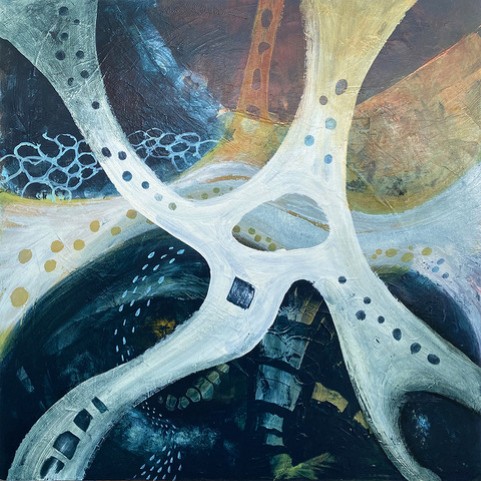
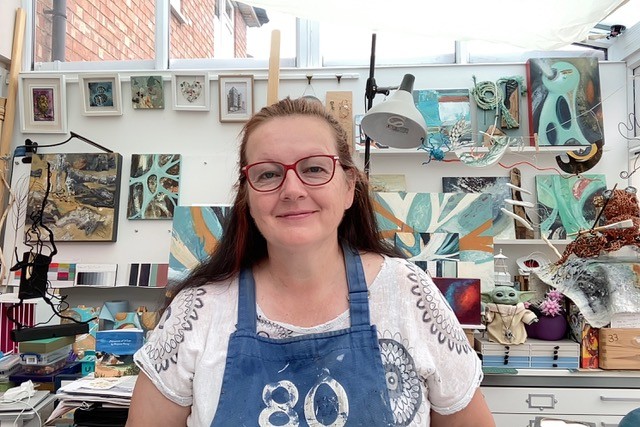
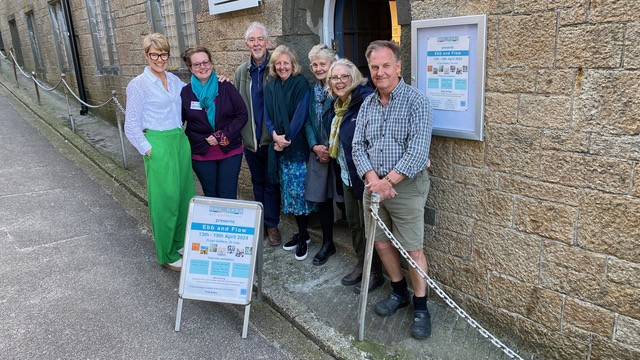
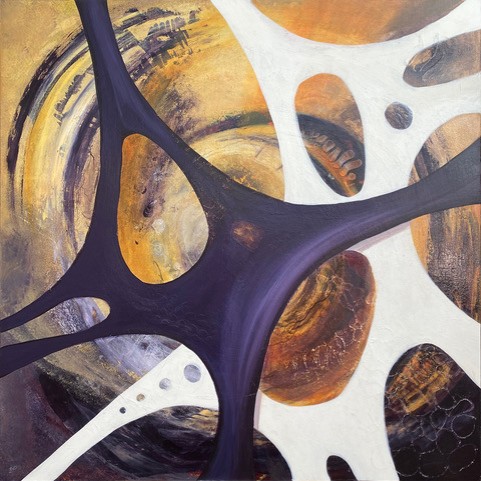
What our students say
I can’t express enough how life changing it has been! I feel privileged to be able to attend such an iconic inspiring venue with staff that have such expertise .
I didn’t believe it when a past student said it will change your life but it really is beginning to and we are only half way through!!
After literally years considering this programme, I’ve taken the plunge and couldn’t be happier with the programme. I’ve loved the connection with my new colleagues and the mentoring session was so supportive. I can’t wait to go again.
The programme allows you to follow the tutoring in a way that works for you. I liked having the support and confidence to try anything without judgement.
The course is just was I was looking for. I arrive and leave St Ives buzzing with painting ideas, experiments and dreams. The painting studio “space” is embracing and positive, as are the tutors and class mates.
FAQs
Studio Courses
How can I get help in choosing a course?
Our friendly expert staff are always happy to discuss your needs and our courses in more detail to help you with your decision. Please call us on 01736 797180
How do I get my work home?
Tutors have special techniques for transporting oil paintings and the school has plastic folders available in our shop for £3.50 or do bring a portfolio.
For international students we are happy to arrange transportation of your work back home.
What do I need to bring?
Absolutely nothing! All materials and aprons are provided although some people do like to bring their own set of brushes.
What do I do for lunch?
Courses allow an hour’s break for lunch and there are numerous places nearby or you are welcome to bring a packed lunch into the studio.
What times do courses run?
Most of our courses start at 10am and end at 4.30pm on the first day. Subsequent days we start at 9.30am ending at 4pm.
Weekend Courses run 10am – 4pm on the first day but the final day starts at 9.30 and ends at 3.30 with a short lunch break to enable people to get home that evening.
Do you have to be experienced to come to the School?
The School is a very friendly and welcoming place for all ages and experience. Our drop-in life classes and August half-day workshops are ideal for those wanting to have a go for the first time. Most of our longer courses are also fine for novices.
If any of the courses do need a bit of experience we flag this up in the brochure and on the website.
Booking a Course
How can I reserve a place?
We will hold a provisional reservation for 24 hours if you give us a call whilst you find accommodation. Otherwise please book online or by telephone 01736 797180.
You can reserve a place with a £100 deposit; balance is due 12 weeks before course start date.
About St Ives
Where do I park?
The nearest long stay public car parks are the Island and Barnoon Long Stay Car Park, both a 5 minute walk away. In the peak summer months it may be easier to park at Trenwith Car Park by the leisure centre and walk down into town. If you don’t fancy the walk up the hill at the end of the day there is a shuttle bus which runs from outside the cinema.
How do I get there?
Public Transport: If you are coming from further afield the main train line runs into St Erth which is a 15 min taxi ride away or you can take the St Ives Bay Line which runs approx. every 30 minutes. The School is a 10 minute walk from St Ives station.
Driving: M5 will take you to Exeter where we recommend that you take the A30 across Bodmin Moor and into Cornwall. After passing Hayle, leave the A30 at St Erth roundabout for St Ives. Turn right at the second roundabout. This road will take you through Lelant and Carbis Bay into St Ives.
Where can I stay?
St Ives has a huge selection of hotels, guest houses and self catering accommodation to choose from. Please browse the art holidays St Ives section on our website and give us a call if you would like any help.
